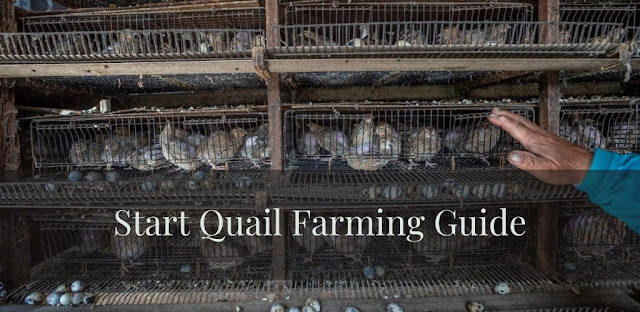Cabbage Farming Guide - Cabbage Cultivation
Cabbage (Brassica oleracea var capitata) belongs to the family Cruciferae. Other member of this family include cauliflower, broccoli and pak-choi.
Cabbage can be cooked or eaten raw as in salads and coleslaw.
It is important for its food value since it is a good source of Vitamins B and C, dietary fibre and minerals. Cabbage can be grown all year round but does better when the nights are very cool (October to March).
Just a few plants planted fortnightly will keep the home continuously supplied with this vegetable. Cabbage Cultivation
Cabbage Varieties
Varieties are classified according to the length of time taken to produce mature heads. Generally there are two types namely early maturing and late maturing varieties.
EARLY MATURING VARIETIES
- Early maturing varieties produce smaller heads and mature between 60–65 days.
- Examples of early maturing varieties are: Tropicana, Fortuna, Blue Vantage , Supreme Vantage and Bravo
LATE MATURING VARIETIES
- Late maturing varieties produce large heads and mature between 65–75 days.
- Examples of late maturing varieties are: Salvation, Green Challenge, Caribbean Queen, and Emperor.
Choose the varieties that are resistant against diseases.
Red cabbages are also available, but they take longer to mature. Examples are Red Rookie, Red Dutch and Red Acre
See also learn about cabbage cultivation in Cabbage Farming Guide App.
Soil Preparation for Cabbage
The soil should be well tilled and sufficiently drained but must allow for good water retention.
This is because Cabbage requires a great deal of water. To prepare the soil for planting, fill the soil with a garden fork and break up the clumps. Form beds if needed; about 1 m (3 ft) wide.
Cabbage responds well to organic manure and does not tolerate acid soils. Mix one handful of well-rotted manure in the soil and incorporate 5g (1 tsp) of hydrated agricultural lime in each planting hole.
Planting Cabbage
In a home garden situation, plants may also be planted in several types of containers or on beds. See factsheet on “Container Planting”. Cabbage may also be intercropped with herbs and other
vegetables.
If producing seedlings, see the factsheet “Producing Seedlings for the Home Garden”. If purchasing seedlings, select healthy seedlings, making sure they are not too old. A healthy seedling is characterized by:
- a shoot: root ratio of about 2:1:
- having about 5–6 leaves and the outer leaves should be at least 5 cm (2 in).
- white roots
When several plants are planted in the same area, plants should be placed about 30 cm (12 in) apart within rows and 38–45 cm (15-18 in) between rows. Late maturing varieties may be planted at slightly larger spacing.
Seedlings should be transplanted late in the afternoon. This will prevent the plants from wilting. When transplanting, observe the following steps:
- Place one seedling into each planting hole and be careful not to cover the base of the first leaves with soil.
- Ensure that the seedlings are firmly positioned by pressing the soil around it with your hand.
- If necessary, after transplanting, apply a soil insecticide and soil fungicide at the recommended rates to protect the seedling in its early stages.
- Keep the plants free from weeds at all times.
Watering Plant
Water the plants immediately after transplanting.
Thereafter, water daily if there is insufficient rainfall.
When watering, add water to the ground at the base of the plant so as to avoid splashing soil unto the leaves.
Remember to use clean water to irrigate the plan
Fertilizer Application
- Immediately after transplanting, apply 5g (1 tsp) of a granular NPK fertilizer such as 12:24:12 to each plant to encourage root growth. Be sure to place this fertilizer at least 5 cm (2 in) away from the plant.
- In the 2nd and 4th weeks after transplanting, apply a granular NPK fertilizer with a high percentage of Nitrogen, such as 20:10:10.
- In addition, in the 3rd and 5th weeks, apply Calcium Nitrate at a rate of 1 tsp (5g) per plant.
- In the 5th and 7th weeks, apply a NPK fertilizer with a high percentage of potassium, e.g. 12:12:17+2 or 13:13:21+2 to develop firm heads.
- The rates of application of these fertilizers range between 1 – 3 tsp (5 – 15g) per plant increasing from 1 tsp to 3 tsp as the plant grows bigger.
Pest and Diseases
Integrated Pest Management (IPM) is the best approach to controlling pests and diseases in a home garden.
In this method, pesticides are not heavily relied upon and cultural as well as biological methods are used.
Harvesting Cabbage
When pesticides have been used, be sure to observe the pre-harvest interval (PHI) as advised on the product label.
The PHI is the period between the last application of a particular pesticide to the time of harvest.
This avoids harmful chemical residue on the harvested cabbage.
Since all varieties do not mature at the same time, it is important to know how long the selected variety takes to mature.
Use the following guidelines to know when to harvest:
- The head is firm or compact when pressed down with the thumb
- The outermost leaves roll back and are not yet yellow.
- The recommended number of days to maturity has passed.
Cut the stem with a sharp knife, close to the base of the plant. Leave about 2 or 3 protective leaves.
The harvested heads can be placed in perforated plastic bags and stored in a refrigerator for 2 - 3 weeks.
Planting cabbage at home can result in the satisfying experience of growing and eating your own healthy food.

.jpg)


Komentar
Posting Komentar